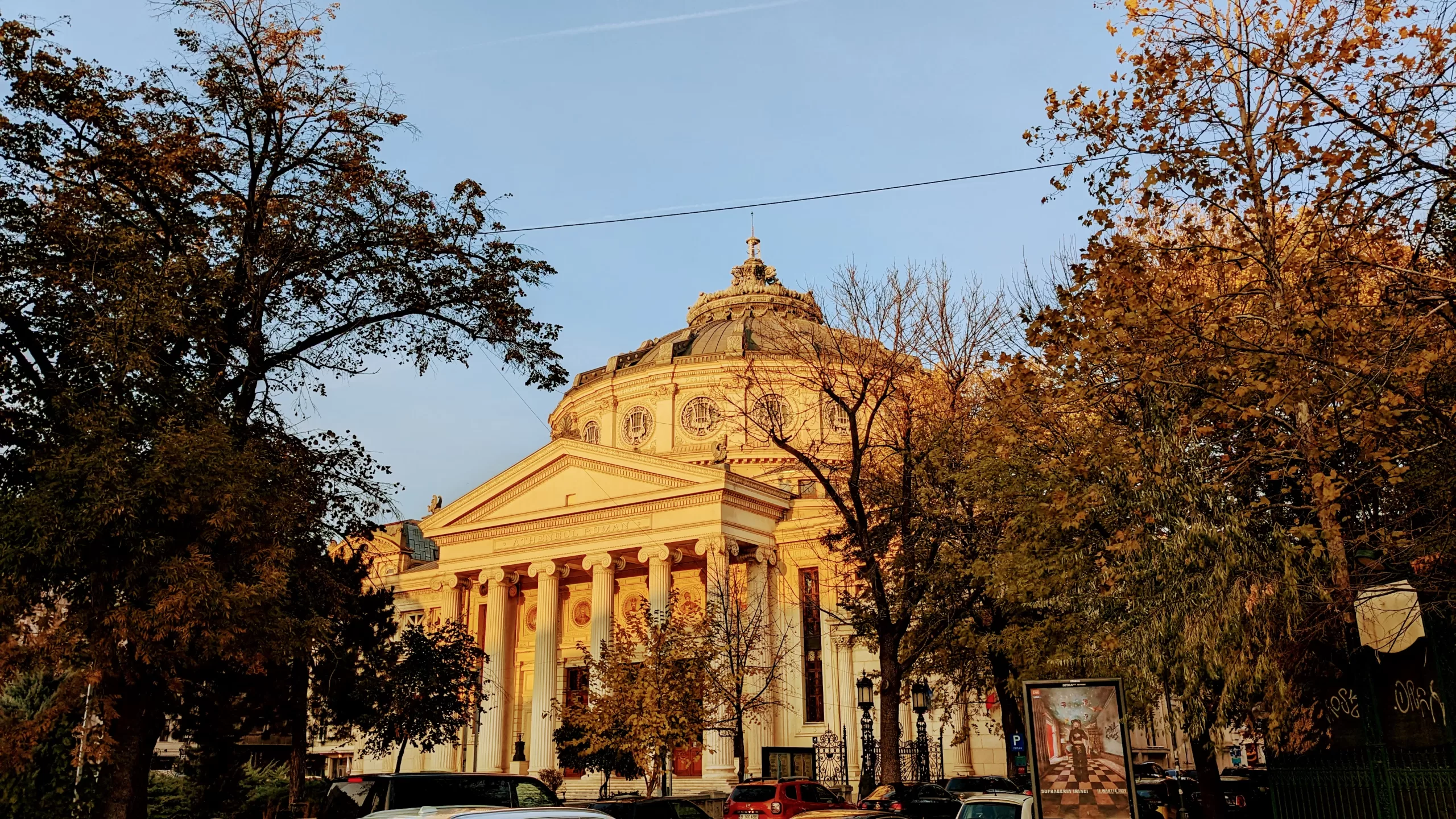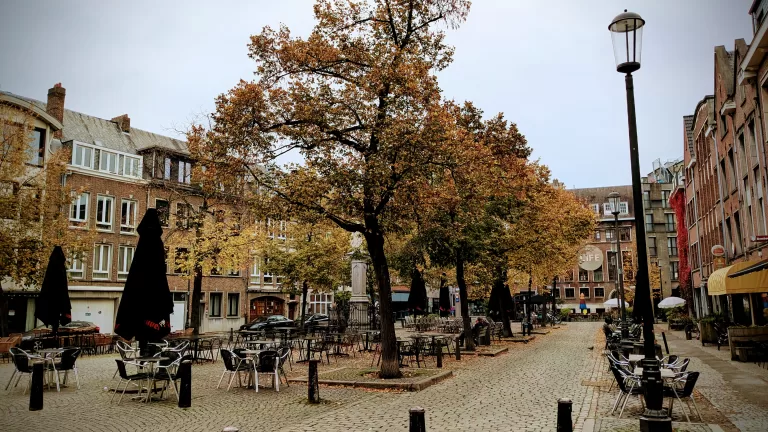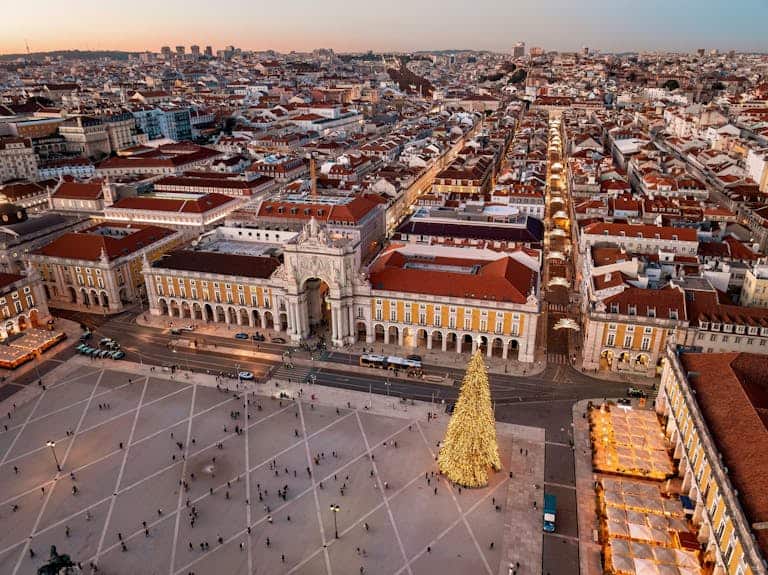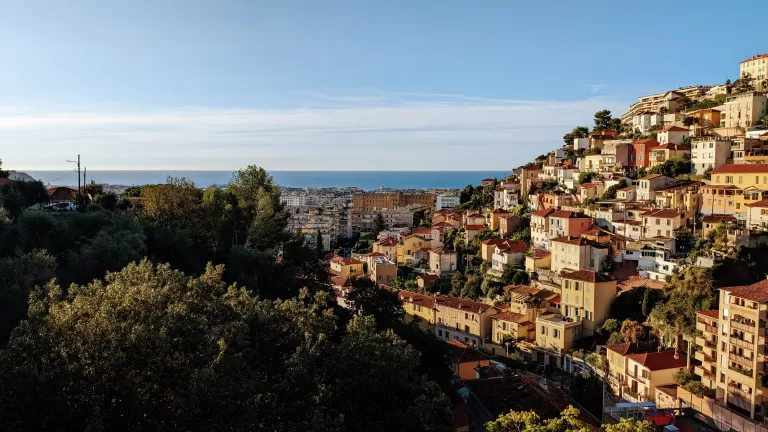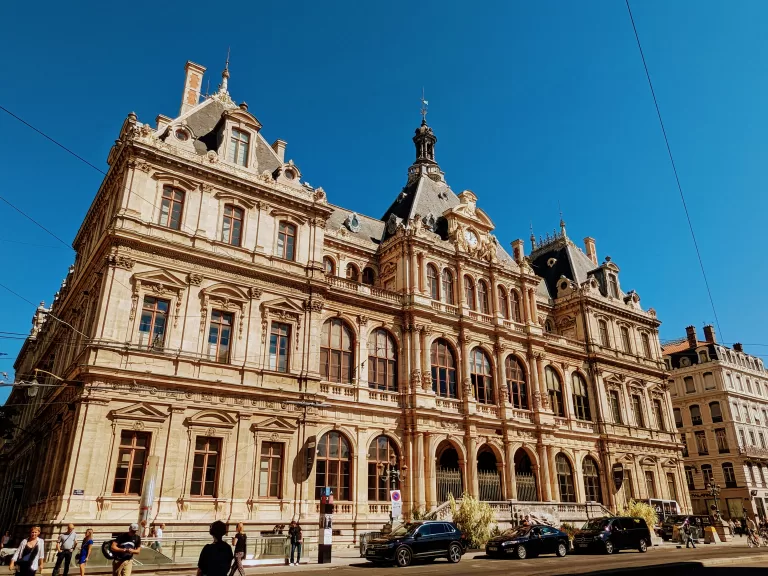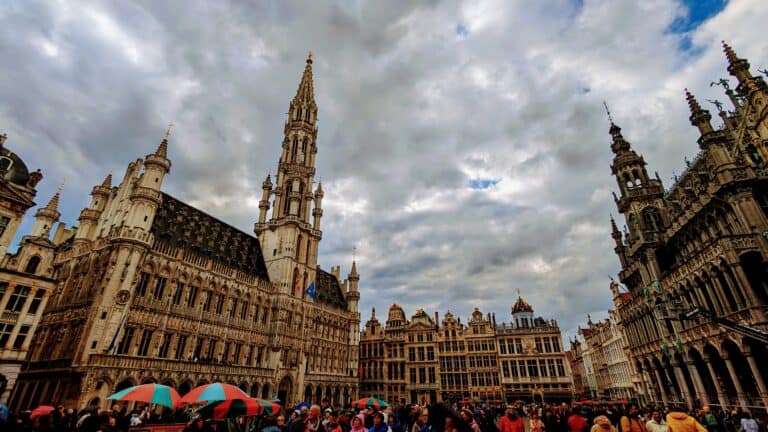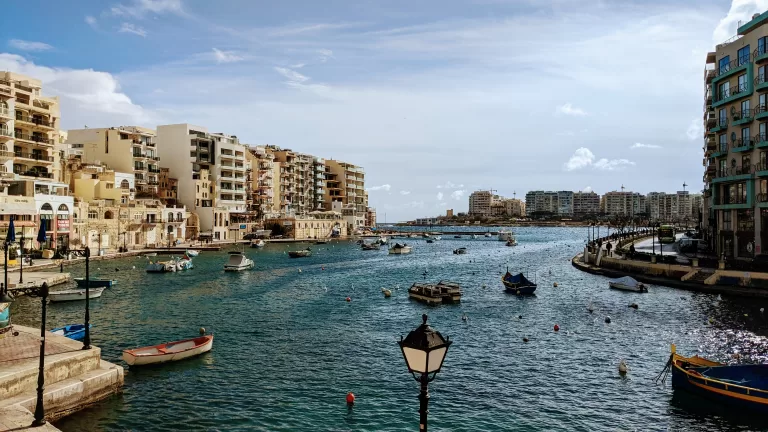17 best things to do in Bucharest, Romania (2025)
When we first went to Bucharest we didn’t know much about Romania. In the UK (and perhaps elsewhere) it’s maybe (unfairly) associated with the Romanian orphanage crisis in the 90’s (Romania has improved its child services and is one of the best in Europe now). We didn’t know what to expect, but found an interesting and beautiful place to visit.
Bucharest is often referred to as the “Little Paris of the East” due to its French architecture and cosmopolitan vibe dating back to the late 19th and early 20th centuries.
It has a long history, having been inhabited since 500 BC. It’s history and traditional buildings, coupled with it’s Soviet-style architecture and remnants of Nicolae Ceaușescu’s communist regime, means is an interesting city to visit.
We had a great long-weekend there – there’s lots of things to do in Bucharest, and some great day trips available too.
The practical stuff
How long should you stay in Bucharest?
We spent 4 days in Bucharest, which is enough time to see Bucharest and go on a couple of day trips (we went on a tour to three castles – more details below – and to the Therme Spa). Its quite a small city so you don’t need loads of time – this depends on what you like doing of course.
Where should you stay in Bucharest?
Bucharest is quite a large city but the majority of the points of interest are in the old town. Because of this we’d recommend staying there or just outside. We stayed in an Airbnb which was very reasonable and right on the edge of the old town.
How do you get to Bucharest?
We flew into Bucharest Henri Coandă International Airport from London. This is the main international airport in Bucharest, so the entry point for most people.
From there, you can take an Uber (to the old town its about 30 minutes) or take the 100 bus which is direct and takes about one hour. Buses leave from the front of the airport (its easily signposted in arrivals). There’s a blue booth to the right of the bus stop to buy a bus card, or you can just use contactless card (or contactless on your phone). You can use the same card to buy multiple tickets. This bus will take you back to the airport at the end of your stay, or goes past the airport to the Therme Spa.
You can also book an airport transfer for around £10 on Viator.
How do you get about in Bucharest?
Bucharest is compact, so getting around anywhere doesn’t take long. Most of the city sights are in walking distance, and then we used buses to get to places further afield.
The bus system is pretty good and will get you to most places. The buses are new and comfortable, and generally stuck to the timetable. We used Citymapper for route-planning which worked pretty well, or you can also use Google Maps.
Uber and Bolt are widely used. Prices are reasonable, we never had to wait long for one, and it saved a bit of time on the bus. You can access it using the same app and account as you’ll use at home.
When should you go to Bucharest?
Bucharest (and Romania) is famous for being cold in winter, and hot in summer. Plan accordingly! Spring and Autumn may therefore be the best times to visit, although I always find going to Eastern European capitals in the middle of winter adds to the atmosphere!
We went in late November. It was somewhat cold, with snow for a day or so, but not outrageously so. We wore jeans and long johns, t-shirt and jumper, and a winter coat. Make sure your shoes are waterproof – when it rained we found it was a very wet city(!) as most of the gutter drainpipes empty onto the pavement and run off into the road.
And don’t forget the Christmas markets if this is your thing – they’re around in December and early January.
What else should I know about Bucharest?
Basic English is spoken a bit, but there was a bit more of a language barrier at times. People are very friendly, and would always help where they could. We felt safe, even at night or in the early hours of the morning.
Most plugs are European two-pin, so bring adapters. Card is very common, and I don’t think we used cash the whole time (ATMs are pretty common if you prefer cash).
Bucharest has excellent mobile data coverage, and most places offer free WiFi too.
What are the best things to do in Bucharest?
Our recommendations
🚕 Book your airport transfer on Get Your Guide
🚗 Hire a car from Discover Cars
📝 Get your travel insurance from EKTA
📱 Get cheap data abroad with an eSim from Yesim
🚌 Book a tour on Viator or GetYourGuide
Old Town Bucharest
Bucharest’s Old Town is a lively and charming area that’s perfect for exploring. Steeped in history, it’s a great place to get a feel for the city’s past and present. As you wander through the cobblestone streets, you’ll find a mix of historical buildings, trendy bars, cafes, and shops. Its one of the few areas remaining of ‘old Bucharest’, as other areas were redeveloped under communism.
Start your visit at Lipscani Street, the heart of the Old Town, where you can see a blend of old architecture and modern establishments. Check out the beautiful Stavropoleos Monastery, a tiny church with beautiful frescoes and a peaceful courtyard.
Another must-see is the National Bank of Romania Museum, which offers a fascinating look at the country’s financial history. Macca-Vilacrosse Passage is a small, covered shopping street (and the perfect place to stop for a coffee). Its cute and almost Parisian, but was slightly run-down when we visited.
The Old Town is also home to the remains of the Curtea Veche (Old Princely Court), the former residence of Vlad the Impaler, the inspiration for Dracula. Check out some of the entries below too, where we’ve featured some of our favourite sites.
Be sure to stop for a coffee or fresh-squeezed lemonade at one of the outdoor cafes on Franceza street. In the evenings, you’ll find the area buzzing with people chatting and drinking on terraces that spill out onto the narrow streets.
You can wander round on your own to see Bucharest, or consider a walking tour like this one which will give you a bit more information on the sites you’re seeing.
Why go? Nice streets, bars and restaurants, history.
How long? Two hours, plus stops.

Palace of the Parliament
The Palace of the Parliament in Bucharest is the second largest administrative building in the world after the Pentagon, and was built during the regime of Romanian communist dictator Nicolae Ceaușescu. Construction started in 1984, and the massive building was finally completed in 1997, more than 10 years after Ceaușescu was overthrown.
The building has 1,100 rooms spread over 12 stories. The sheer size and scale of the building is amazing. It’s a powerful symbol of Romania’s totalitarian and lavish communist era (contrast this with the modest rooms under communism you’ll see recreated at the Museum of Communism).
Ceaușescu intended the building to house all major state institutions, including the parliament and his residence. Today it houses Romania’s Parliament, the Senate, three museums, and serves as an international conference centre.
You can’t visit independently, or buy tickets on the day. You’ll need to buy a guided tour in advance – we recommend this one – which is good value and includes entry and the tour. Book as early as possible, as it gets booked up. Even if you can’t go on a tour, its still worth visiting and seeing from the outside.
Why go? To see a ridiculously big building.
How long? 30 minutes to wander outside – longer if going for a tour.

Calea Victoriei
Calea Victoriei is a historic avenue and main street in central Bucharest lined with beautiful belle époque architecture, boutiques, cafes, and museums. Stretching 2.7km, Calea Victoriei is a lively promenade perfect for strolling and people watching.
The avenue showcases a mix of architectural influences, from neoclassical to art nouveau, that reflect Bucharest’s complex history. Notable buildings include the Cantacuzino Palace, the Romanian Athenaeum concert hall, the National Museum of Art of Romania, and the historic CEC Palace. For a dose of culture, pop into one of the many art galleries and museums found along the avenue.
Calea Victoriei is also home to high-end shops, antique stores, cafes, and restaurants. Stop for a break at a traditional café like Casa Capșa, which has been serving customers since 1852. Or head to Caru’ cu Bere, a famous beer hall established in 1879.
The Museum of Communism
The Museum of Communism in Bucharest is small but interesting, showing life under communist rule and the history of Romania in the 20th century.
This lesser-known spot gives you a look at what daily life was like, the political propaganda, and how people coped during that time. It has a great collection of artefacts, photos, and personal stories.
There’s about four rooms in the museum, most decorated and styled like a typical room under communism. You’ll find everything from old household items and clothes to exhibits on censorship and surveillance.
It’s a contrast to the modern, lively Bucharest you see today, but gives an excellent background and context to modern Bucharest. Everything is in English, and it was pretty quiet when we went.
You can also have a communist style-dinner after hours, as well as a guided tour. We didn’t do it (it wasn’t available when we were there, but it looks interesting! – let us know if you did it!).
Why go? Learn about communism and Romania’s history
How long? 1-2 hours.
Revolution Square
Revolution Square, also known as Palace Square until 1989, is a historic square in Bucharest known as the site of the 1989 Romanian Revolution that overthrew the communist regime of Nicolae Ceaușescu. The square is located on Calea Victoriei and contains several notable buildings such as the former Royal Palace, now the National Museum of Art of Romania, as well as the Athenaeum and the Memorial of Rebirth.
During the 1989 revolution, over 100,000 protesters gathered in the square demanding democratic reforms and calling for an end to the repressive communist government. After Ceaușescu fled by helicopter on December 22, 1989, fighting broke out in the square between revolutionaries and loyalist troops, leaving over 1,100 dead. Today, the square contains memorials commemorating the revolution such as the Memorial of Rebirth and statues honouring those killed during the uprising.
We’d definitely recommend going. Its not the most visually interesting square, or contain much to do, but it’s an important part of Romania’s history. We went to Ceaușescu’s palace and the Museum of Communism (and watched various clips on YouTube) and it was great to see it in person. You’ll recognise the balcony where Ceaușescu gave his last speech where he was booed off, and it gave context to everything we’d learned.
Why go? An important place in Romania’s history.
How long? 30 minutes.
Ceausescu’s Villa
Ceausescu’s Villa in Bucharest is a fascinating spot that gives you a glimpse into the opulent lifestyle of Romania’s former dictator, Nicolae Ceausescu. Known as the Spring Palace, this villa was his private residence and remained a mystery to the public for many years. Now open for tours, it’s an fascinating and weird place to visit.
The villa is lavishly decorated, with gold-plated bathrooms, luxurious living spaces, and an impressive indoor swimming pool. It’s incredible that the Ceausescu lived here in luxury, while Romania became gradually poorer..
Tours are available in English and run every hour (other languages are available). It’s a good idea to book your tickets in advance online, as the tours can fill up quickly, but you may be able to turn up and get a ticket. You can’t go around on your own.
We walked there from the Old Town which took about an hour (through a range of different neighbourhoods – a great way to see more of the city). You can also get a bus (for example, the M2 goes pretty much door to door).
Why go? History and the pitfalls of communism, and where else can you see a gold-plated bathroom.
How long? 1.5 hours.

Therme Spa
Therme Bucuresti, located just north of Bucharest’s city centre, is the largest spa complex in Europe. Its massive (with amazing outdoor pools) with multiple zones offering different facilities and vibes. It offers a chance to relax and rejuvenate in various indoor and outdoor thermal pools, saunas, massage areas, and relaxation spaces.
Its easily accessed from Bucharest (get the 100 bus from the Old Town). It’s also cheap to enter for – around £20 for the day.
Why go? Relaxation after a busy holiday sight-seeing.
How long? One day (or get a shorter pass and go for half a day)
National Museum of Art
The National Museum of Art of Romania is housed in the former Royal Palace in Revolution Square. It showcases an amazing collection of Romanian and European art from the medieval period to modern times.
It was built in 1937 as the official residence of King Carol II. After World War II when the monarchy was abolished, the palace was converted into an art museum.
Wandering through the ornate halls provides a glimpse into Romania’s cultural heritage. The galleries feature medieval art, icons, frescoes and religious paintings from churches and monasteries across the country. The modern Romanian collection includes works by masters like Grigorescu, Andreescu, Tonitza and Pallady.
European artists such as El Greco, Rembrandt, Renoir, Monet and Matisse are also represented. With over 100,000 pieces spanning seven centuries, this is the country’s largest art collection and a must-see in Bucharest.
Why go? Art and culture.
How long? Two hours.
Our recommendations
🚕 Book your airport transfer on Get Your Guide
🚗 Hire a car from Discover Cars
📝 Get your travel insurance from EKTA
📱 Get cheap data abroad with an eSim from Yesim
🚌 Book a tour on Viator or GetYourGuide
Carturesti Carusel
Carturesti Carusel is a beautiful bookstore in Bucharest, located in a historic building in the Old Town. It’s housed in a restored early 20th century building with curved walls and a beautiful glass-domed roof.
It’s often on lists of where to go in Bucharest so we’ve included it here for completeness. However, although an impressive conversion, we weren’t blown away.
If you need a rest, head upstairs to the café. There’s a charming balcony overlooking the interior, making it the perfect spot to relax with a hot drink.
Why go? Nice to look at, and coffee.
How long? 15 minutes, unless staying for coffee.
Museum of the Romanian Peasant
The Museum of the Romanian Peasant in Bucharest showcases Romania’s rural heritage and cultural traditions. It has an extensive collection of traditional clothing, handcrafted pottery, and wooden artifacts, giving visitors an authentic look at the everyday lives of Romanian peasants.
While not everyone’s cup of tea, if you have time we’d recommend having a wander about.
Why go? Learn more about Romania’s cultural heritage.
How long? Two hours.
Herăstrău Park
Herăstrău Park is the largest park in Bucharest at 462 acres. It is located on the northern side of the city, surrounding Herăstrău Lake. This scenic park offers a nice respite from the busy city with lush gardens, walking trails, restaurants, and recreational activities on the lake.
You can rent small boats, kayaks or pedal boats to enjoy the lake. There are also open air terraces at some of the restaurants where you can relax with a drink or meal overlooking the water. The park has beautiful landscaping with rose gardens, Japanese gardens and other themed gardens to explore. It’s a great place for a stroll, jog or bike ride on the many pathways throughout the park.
We’d recommend combining it with another attraction if you’re in the area (for example, Ceausescu’s Villa). We probably wouldn’t go out of our way to visit it on its own.
Why go? Nature and a respite from the city.
How long? One hour.

Day Trips from Bucharest
Bucharest makes an excellent base to explore the surrounding areas of Romania on day trips.
Bran Castle, located in Bran in Transylvania, is commonly known as Dracula’s Castle due to its connection to Bram Stoker’s Dracula character. The medieval castle perched on a cliff was built in the 14th century and was built to protect the local area and collect tolls on travellers. We visited when it was snowing, which added to the magic. The rooms are mainly empty so many people are disappointed (especially compared to Peles castle, which is often visited in the same trip), but we loved it. You can get there by car or bus, but to maximise our time we went on a tour which included Peles Castle and Brasov.
Peles Castle in Sinaia is another popular day trip, offering a beautiful mountain setting and tours of the historic royal residence. It was built in the late 19th century for King Carol I (it was planned, rather than being added to over the years, so we thought of it as a ‘new-build castle’) and features opulent interiors and collections. The charming mountain town of Sinaia has hiking trails and a cable car up nearby peaks. We went on a day tour so that we could visit Bran Castle and Brasov at the same time.
Brașov is a charming city in the heart of Romania, nestled in the Carpathian Mountains. Known for its well-preserved medieval architecture, Brașov offers a blend of architecture, history, culture, and natural beauty. Its best visited as part of a tour with Bran Castle and Peles Castle.
The Carpathian Mountains provide scenic spots for hiking, skiing, and relaxation. Mountain resorts like Sinaia, Busteni, Predeal, and Poiana Brasov can be reached in 1-2 hours from Bucharest by car or bus. Many offer different outdoor activities in stunning natural settings.
The Black Sea coastline also makes for enjoyable day trips from Bucharest during the warmer months. The sandy beaches and seaside towns of Mamaia, Constanta, and Vama Veche are 2-3 hours away by car or train. It’s a nice change of scenery from the city and a chance to enjoy the seaside.


